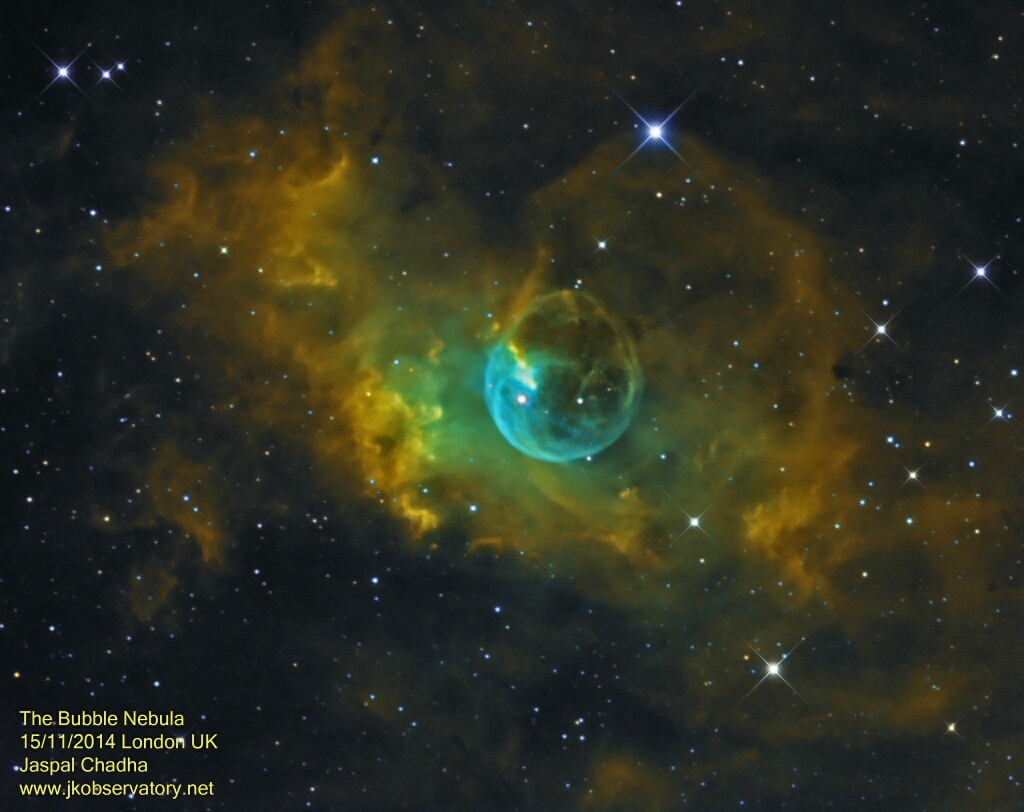

Images of far-off cosmic objects often inspire silly nicknames that make very little sense. However, in many cases, the nicknames are spot-on. And, not to mention, they are much easier to remember than the intrepid, but useful, designations astronomers use to convey the bare basics (like who discovered the object, which telescope was used and where it was cataloged).
The nickname this region was given seems rather obvious. Formally known as NGC 7635, most people refer to it as the Bubble nebula. It lurks approximately 11,000 light-years from Earth in the constellation of Cassiopeia.
This celestial wonderland is the result of the tireless work of one large o-type star (pictured within the bubble in the 8 o’clock position), believed to weigh as much as 45 Suns combined. Naturally, given its size, it’s also much larger and far more luminous than our Sun; characteristics that are made clear in the bubble-like cavity it spawned. The bubble formation alone, which was carved out by stellar winds, spans well over 10 light-years across!
This image of the Bubble Nebula was taken by Jaspal Chadha (from JK Observatory), using an Altair Astro RC 250TT Scope, QSI 690 CCD and Ioptron CEM 60. You can see more of his astrophotography work on flickr.
You can see a larger image here, or you can take a 3D tour here.